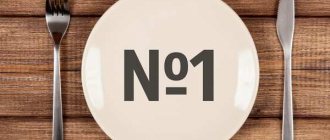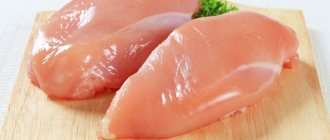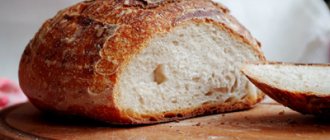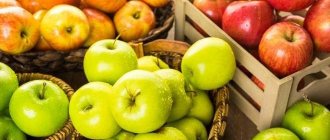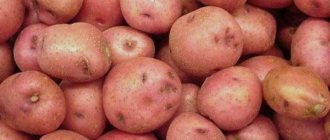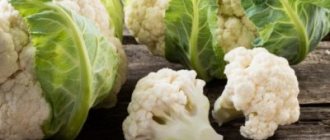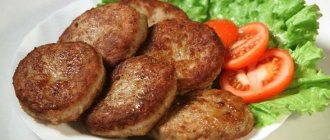For serious diseases associated with the digestive tract, the main component of treatment is diet. The nutrition system is specially selected to suit the body's needs based on its disease state. The GERD diet is designed to help stop the painful symptoms of the current disease and cope with it once and for all. However, as a rule, many people do not know what they can and cannot eat on an anti-reflux diet.
Which table is indicated for GERD?
Some of the predisposing factors for the development of GERD are:
- poor nutrition;
- abuse of alcohol and tobacco products;
- prolonged exposure to a stressful situation.
Diet is considered an effective method of treating this pathology. Patients suffering from GERD are recommended to adhere to table No. 1a according to Pevzner. Therapeutic nutrition is aimed at restoring the gastric mucosa and reducing the excitability of the digestive tract. The technique minimizes the risk of temperature, chemical and mechanical effects on the gastrointestinal tract.
Experts recommend sticking to the diet constantly. The technique is characterized by a reduction in the amount of fats and proteins consumed daily. You also need to count your carbs.
The main principles of the nutrition system are:
- reduction in calories;
- exclusion of hot and cold dishes;
- complete avoidance of foods that are slowly or poorly digested;
- exclusion from the diet of various irritants and secretion agents.
Experts recommend refraining from eating rough foods that can irritate the digestive tract. Food is taken often, in small portions.
The benefits of honey
When using honey in case of reflux esophagitis, it is necessary to choose from the many varieties of this product, the one that is most easily absorbed by the patient’s stomach and intestines, and does not cause unnecessary irritation to the mucous membrane of these organs. To maximize the benefits of this product, for esophagitis it is consumed an hour or two before meals or three hours after it. To improve the absorption of honey in the body, it is recommended to dilute it with warm water. You can do it differently: immediately after waking up and before going to bed, eat a tablespoon of honey, continuing this treatment for two months.
Honey will be beneficial for the body of a patient with esophagitis as a substitute for sugar during the period of dieting. Dietary requirements for nutrition for this disease recommend strict limitation of sugar and any sweets. Therefore, honey can compensate for the lack of these products; most importantly, its amount should not exceed the norm of 50 grams.
Features of creating a menu for gastroesophageal reflux during an exacerbation
A diet for GERD (the menu for each day is presented later in the article) implies a correction of the usual diet. Nutrition should be balanced, gentle and varied. Before going on a diet, the patient must give up alcoholic beverages and cigarettes.
It is necessary to partially exclude from the menu products that contribute to increased gas formation. Against the background of flatulence, pressure in the peritoneal area increases, which increases the risk of backflow of hydrochloric acid and stomach contents into the esophagus.
Fermentation processes in the intestines should not be allowed to develop, so it is recommended to exclude any yeast-containing foods and drinks from the diet. Most of the daily calories are prescribed to be consumed in the first half of the day.
Dinner should be light. Basic principles of menu design:
- do not eat foods that can reduce the level of acidity in the stomach;
- exclude products that can damage the mucous membrane;
- Avoid gas-forming products.
The last meal should be no later than 19:00. To speed up the process of producing gastric juice, each piece must be chewed thoroughly for 1-2 minutes.
Is it possible to eat honey if you have reflux esophagitis?
Some foods that are beneficial for the body are undesirable to eat if there are disorders in the internal organs. Honey for esophagitis is one of them, since in the acute form of this disease or during periods of exacerbation of its chronic form, the use of honey can cause irritation of the mucous membrane lining the esophagus. During periods of remission of chronic esophagitis, a small amount of this unique product is allowed, but one serving should not exceed 50 grams.
Table of permitted products
A diet for GERD (the daily menu includes fresh vegetables, fish and dairy products) helps eliminate swelling of the mucous membrane.
Table of allowed products:
| Category | Name | Calorie content (kcal) |
| Oils | Natural butter | 650-750 |
| Eggs | Chicken, quail | 130-180 |
| Meat | Chicken | 140-180 |
| Turkey | 75-85 | |
| Rabbit | 140-160 | |
| Veal | 125-135 | |
| Beef | 230-260 | |
| Milk and its derivatives | Cheese (hard varieties) | 120-140 |
| Cream | 200-220 | |
| Milk | 45-70 | |
| Seasoning, sauces | Homemade sour cream sauce | 70-90 |
| Homemade milk sauce | 85-100 | |
| Cane sugar | 390-420 | |
| Flower honey | 320-340 | |
| Sweets | Fruit jelly with natural juice | 75-85 |
| Bread | Wheat white | 235-250 |
| Cereals | White rice | 320-350 |
| Oat flakes | 350-370 | |
| Semolina | 320-330 | |
| Buckwheat | 300-320 | |
| Greens and fresh vegetables | Orange pumpkin | 25-35 |
| Beet | 35-45 | |
| Carrot | 30-35 | |
| Potato | 75-85 | |
| Cauliflower | 25-35 | |
| Zucchini | 25-30 |
It is preferable to cook first courses in vegetable broth. Vegetables and cereals are added to the soup in grated form. You can season the dishes with a small amount of butter or add a beaten egg to it. Vegetables are added to soups and cabbage soup fresh; sautéing them is prohibited.
Wheat bread is slightly dried before use. Lean meats can be boiled or baked in sauce. Frying and deep frying are completely ignored. Steam cutlets or soufflé are prepared from meat. The diet may contain low-fat varieties of fish. The fillet is steamed.
For breakfast, he usually eats porridge cooked in water with the addition of a small amount of milk. Rice and core are pre-wipe. Dairy products are consumed no more than once a day. It is recommended to purchase manufactured products with minimal fat content. Not only first courses are prepared from vegetables, but also salads, puddings and purees.
You can add a small amount of vegetable oil to the soup. The diet should include sweet fruits (apricots, pears, bananas). They are not allowed to be consumed fresh. They are used to prepare jelly, puree or compote.
Fully or partially limited products
A diet for GERD (the menu for each day can be adjusted independently if desired) involves excluding a number of foods that negatively affect the stomach from the diet.
| Category | Name | Calorie content (kcal) |
| Fat, oils | Olive, rapeseed, sesame | 735-750 |
| Animal fat | 880-920 | |
| Rendered cooking oil | 880-920 | |
| Seafood, fish | Smoked fish | 180-200 |
| Dried fish | 120-140 | |
| Canned fish | 70-100 | |
| Squid | 250-320 | |
| Octopuses | 180-300 | |
| Meat and meat products | Goose | 340-370 |
| Smoked duck | 120-350 | |
| Roast duck | 330-350 | |
| Smoked chicken | 180-220 | |
| Pork | 240-260 | |
| Sausage and sausage products | Dried sausage | 440-480 |
| Sausages, sausages | 220-300 | |
| Dairy products | Curdled milk | 45-60 |
| Kefir with a fat content of more than 3.2% | 50-80 | |
| Sour cream, cottage cheese | 210-230 | |
| Ready-made sauces and seasonings | Spicy tomato sauce | 80-90 |
| Tomato sauce without salt | 75-85 | |
| Hot peppers | 40-55 | |
| Mayonnaise | 620-650 | |
| Spicy tomato kebab ketchup | 95-120 | |
| Mustard | 140-170 | |
| Ground black pepper | 140-180 | |
| Sweets | Ice cream | 170-190 |
| Candies | 430-460 | |
| Jam | 150-270 | |
| Cakes, pastries | 450-480 | |
| Bakery products | Wholegrain | 280-300 |
| Bran | 220-230 | |
| Cereal with rolled oats | 270-300 | |
| Rye crackers | 140-180 | |
| Pasta | Pasta, vermicelli, spaghetti | 320-350 |
| Cereals | Barley | 310-330 |
| Millet | 340-350 | |
| Pearl barley | 310-330 | |
| Corn | 330-350 | |
| Fruits, berries, dried fruits | Citrus fruits (oranges, tangerines, lemons) | 18-30 |
| Currant | 40-45 | |
| Gooseberry | 40-45 | |
| Grape | 50-70 | |
| Dates | 260-290 | |
| Strawberry | 45-80 | |
| Vegetables | Fresh horseradish | 50-60 |
| Tomatoes | 15-25 | |
| Asparagus | 15-25 | |
| Turnip | 25-35 | |
| Black radish | 35-45 | |
| White radish | 20-25 | |
| Radish | 20-25 | |
| Canned vegetables | 35-45 | |
| Legume vegetables | 150-170 |
Pickled or pickled vegetables should be completely excluded from the diet. Canned processed foods, smoked fish and meat, and rich broths are prohibited.
You cannot eat goose, duck, lamb or rabbit meat. Prohibited foods include mushrooms (regardless of the method of preparation). Sweet and sour fruits and berries contain a large amount of fiber, so they are removed from the menu.
Butter or puff pastry, fresh rye, whole grain bread should not be consumed during the diet. White cabbage, legumes, cucumbers, radishes, sorrel, and onions contribute to increased gas formation, so they are not added to first and second courses. It is necessary to completely avoid ready-made sauces (tomato paste, mayonnaise, mushroom sauce, fish sauce, tartar).
Poorly digestible and rough foods include pasta dishes, porridge made from pearl barley, barley and millet. Fermented milk products with a fat content of more than 3.2% should be completely excluded from the diet. Concentrated juice from tomatoes, currants and lemon should not be consumed. Dairy products can cause severe heartburn.
Nutrition for reflux esophagitis
In GERD, the lower part of the esophageal tube becomes inflamed because hydrochloric acid penetrates the upper part and burns the esophagus. Reflux develops due to dysfunction of the lower esophageal sphincter, diaphragmatic hernia, or due to increased pressure inside the abdominal cavity.
In a third of patients, the pathology provokes the development of reflux esophagitis: with the constant reflux of acidic stomach contents, the esophageal mucosa is damaged, which leads to functional disorders, the development of superficial inflammation, the formation of ulcers or erosions.
At first it was believed that inflammation affected the superficial layers of the esophageal mucosa, and then erosions and ulcers developed, that is, catarrhal esophagitis precedes erosive esophagitis. However, studies have revealed that the forms of the disease develop independently of each other and are not stages of the disease.
Reflux esophagitis manifests itself as belching, pain behind the sternum, unpleasant sensations when food passes through the esophagus, and constant heartburn. Lack of treatment can lead to serious complications that threaten the patient’s life (bleeding from strictures or erosions, the formation of Barrett’s esophagus, adenocarcinoma), so the patient needs long-term and competent therapy.
One of the doctor’s prescriptions will be to follow a therapeutic diet that helps reduce the frequency of reflux and protects the gastrointestinal tract (GIT), thereby creating conditions for reducing the inflammatory process and regenerating esophageal tissue.
Permitted and prohibited drinks
During the diet, it is important to maintain a drinking regime.
The list of permitted drinks includes:
- herbal teas (chamomile, rosehip);
- mineral still water;
- fresh berry jelly;
- dried fruit compote (dried apricots, raisins, prunes).
It is necessary to remove sweet, slightly and highly carbonated drinks, energy drinks and protein shakes from your diet. It is not recommended to drink strong coffee and black tea.
Cocoa and chicory drink are also prohibited. Patients suffering from GERD must completely abstain from drinking alcohol (of any strength). Beer, liqueurs, cognac, vodka, whiskey, absinthe and wine are strictly prohibited.
Recommendations
Compliance with preventive measures will avoid the recurrence of gastroesophageal reflux disease. Following simple rules will protect the body from serious complications.
Basic lifestyle recommendations for gerb
For GERD it is recommended:
- stop using tobacco and alcohol products;
- eat healthy, wholesome food;
- drink mineral alkaline water without gases;
- do not lie down on a horizontal surface after eating;
- sleep on a high pillow;
- do not exercise for at least half an hour after eating;
- monitor the character of the stool;
- regularly visit a gastroenterologist, take tests, undergo examinations;
- monitor your body weight.
We recommend: The most effective drugs for the treatment of reflux esophagitis
Can diet cure GERD?
A diet for GERD (the menu for each day must be compiled individually) is not able to cure the pathology. Proper nutrition is considered one of the methods to improve the patient’s well-being.
In case of exacerbation of gastroesophageal reflux, the therapy, in addition to diet, includes:
- drug treatment;
- use of traditional medicine.
The patient is prescribed alginates and antacids. The last category of drugs is taken several times a day after meals. Alginates protect the gastric mucosa from irritation.
Traditional medicine does not replace drug therapy. Decoctions and infusions based on medicinal plants can be taken throughout the day (no more than 2-3 times). Cabbage and potato juice quickly eliminates heartburn and neutralizes the aggressive effects of hydrochloric acid on the mucous membranes of the esophagus and stomach.
Excluded from the diet
Of course, every patient with GERD is most concerned about which foods need to be excluded, what can be eaten with GERD, which foods need to be specially prepared, meal times, and the ability to fully eat tasty food even from the meager permitted foods.
With this pathology, nutritionists do not recommend consuming the following dishes and products:
- All products with high fat content and in any form: for example, butter, lard, mayonnaise, stew, fatty meats, poultry with oily skin.
- Salted and smoked fish, sausage, any canned food.
- Hard-boiled or fried eggs.
- All types of legumes - beans themselves, peas, beans.
- “Heavy” porridges made from corn and pearl barley.
- Mushrooms in any form.
- Fermented milk products: full-fat sour cream, fermented baked milk. However, a small amount of kefir is allowed after the main meal.
- Foods that cause excessive secretion of gastric juice are included in the list of what not to eat with GERD - ketchup, hot sauces, mustard, herbs.
- All products containing extractive components - dry-cured, smoked, semi-smoked sausages, instant food (for example, noodles, soups and cereals with spicy dressings, potatoes), which cause irritation of the mucous membrane of the spice.
- Of course, alcohol is prohibited for GERD.
- Avoid sweets as much as possible, including jam, which provokes reflux attacks, ice cream, cakes and pastries, sweets, especially chocolate.
- Among ready-made dishes, sour, rich soups, borscht, such as solyanka, cabbage soup, etc. are not recommended for consumption. Vegetable soups with fried dressings are also prohibited.
- Red borscht, including beetroot soup, sour cabbage soup, soups made from all types of legumes, and mushroom soups, both with barley and potatoes, are absolutely contraindicated. Such food is very difficult for the esophagus and stomach.
- Soups and borscht cooked in strong meat broth made from bones are not recommended.
- The consumption of any fried foods is excluded, and at the time of exacerbation of manifestations, attacks - even baked food.
- The consumption of sour and exotic fruits is prohibited.
- Nuts are prohibited for the entire duration of treatment.
- Prohibited foods include radishes and radishes, durum cabbage, cucumbers, tomatoes with skin, turnips, bananas are prohibited for GERD (they can cause heartburn), and quince.
- The menu for this pathology does not include: raw onions and garlic, all legumes except green peas and frozen peas, asparagus (but without the skin).
These foods and dishes should be avoided as much as possible in case of GERD, as they significantly reduce the function of the lower esophageal sphincter, which prevents the full closure of this muscle after transporting food to the stomach. In addition, all these foods and dishes irritate the walls of the esophagus, which provokes inflammation of the mucous membrane of its walls. All this reduces the functioning of the entire gastrointestinal tract during illness. Therefore, the question of what you can eat with GERD must be taken very seriously.
How long should you stick to table No. 1a?
Gastroenterologists advise people suffering from GERD to adhere to table No. 1a constantly. If the patient does not have the desire to eat regularly according to the method developed by Pevzner, then the nutritional system is practiced periodically at times of exacerbation of the disease. In this case, the duration of the diet is 10-14 days.
For GERD, diet table 1 is indicated
After the exacerbation has entered the remission stage, you can move on to table No. 1b. This is a more balanced and challenging diet.
Conservative methods of treating esophagitis
The use of medications for esophagitis may be more effective if they are supplemented with foods that are beneficial to the digestive tract. Using honey in reasonable quantities helps the body receive essential microelements and vitamins that are difficult to obtain from other foods. Thanks to this, the recovery processes are more intense, as the body becomes able to resist the development of pathological changes. The use of medications in this condition will allow you to quickly obtain a positive result from treatment.
At what interval should you eat?
During the diet, food is consumed at least 6 times a day. The interval between meals is no more than 2-3 hours. The first meal (breakfast) is the most important. It is eaten almost immediately after waking up - at 8.00-8.30. The last meal is taken no later than 19:00.
Snacks play an important role. People suffering from gastritis should not feel hungry for a long time. Up to 2 snacks are allowed per day (afternoon snack and lunch). You should not eat immediately after breakfast or lunch; the stomach must have time to digest the previous portion.
The interval between main meals and snacks is 1.5-2 hours. Late (second) dinner is taken 2-3 hours before bedtime. Suitable snacks include fruits, sandwiches with low-fat cheese, and dairy products. During the second breakfast, experts recommend eating sweet fruits.
The diet may include:
- pears;
- mango;
- bananas;
- peaches.
If a person does not feel hungry closer to lunch or dinner, then you should not skip meals. It is better to limit yourself to a light vegetable salad or a glass of kefir. After eating, experts do not recommend taking a horizontal position. In this case, there is a high risk of hydrochloric acid reflux into the esophagus from the stomach.
Excessive physical activity is prohibited for patients suffering from GERD, so you can take a walk in the fresh air. Between main meals, in addition to eating fermented milk products and fruits, you should drink a glass of warm water. The diet may contain non-carbonated mineral water.
What can you eat?
Pevzner classified the list of substances that the human body needs to receive per day, even if he has cardia insufficiency. Here he is:
- You need to consume almost 100g of protein per day (recommended 85-90), of which half (40-45g) should be of animal origin;
- carbohydrates need 300-350g (simple sugars should be in the range of 50-60g);
- Many people need less fat - 70-80g (of which 25-30g should be of vegetable origin).
The reflux diet involves consuming the following foods:
- various types of yoghurts (but not fatty ones);
- low-fat kefir and light fermented baked milk;
- cottage cheese;
- eggs (soft-boiled);
- lean meat;
- lean fish;
- fresh fruits and vegetables;
- compotes;
- porridge, but only if they are cooked in water;
- chicken broths (low-fat and non-rich).
Of course, the list can be continued, but it should be remembered that each person reacts to one or another product individually. Therefore, from the above, both prohibited and permitted products, you need to focus on the presence or absence of heartburn, as one of the main symptoms of the disease.
It's important to know what principles to follow if you have gastroesophageal reflux disease
Doctors quite rarely focus on drawing up a detailed diet for the patient, and there is no talk of a weekly menu at all. Most often, the doctor limits himself to general nutritional recommendations, but does not dwell at all on the basic principles of nutrition, compliance with which is key to the patient’s recovery.
The diet for erosive reflux esophagitis should be based on the principle of frequent meals in small portions throughout the day.
It's better to use small plates (a small portion on a large plate will force you to add more). Before starting a meal, it is recommended to drink a glass of cool boiled water. This allows you to avoid overeating that is dangerous for you. After eating, active sports are excluded, especially jumping and running.
You should also not lie down in a horizontal position, because gastric juice can enter the esophagus and cause heartburn and other unpleasant sensations, so you will have to forget about taking a nap after lunch during the treatment. However, a short walk in the fresh air is recommended. The last meal before bed should be at least 2.5 hours before going to bed.
Food temperature
During the diet, no indulgences should be allowed. The process of restoring the irritated mucous membrane takes a long time. To prevent additional injury, it is necessary to properly prepare the first and second courses. Allowed foods can be boiled, baked, stewed and steamed.
It is important to observe the temperature regime: dishes can be neutral (not too hot and not too cold). To simplify and speed up the digestion process, solid foods (cereals, vegetables, meat) must be cut as finely as possible or passed through a meat grinder.
Reviews
Dear readers, your opinion is very important to us - therefore, we will be glad to hear your feedback about honey for esophagitis in the comments, this will also be useful to other users of the site.
As far as I can remember, our family has always loved honey, we bought it in large quantities at the end of summer and autumn and used it to treat all diseases. My mother was sure that this product had unique healing properties and helped with literally everything. Well, I inherited her habit; I also treat myself, my husband, and my children with honey. However, for some reason he did not tolerate such methods very well; after honey, his stomach began to growl, belching and heaviness in his stomach. Moreover, he has such symptoms even after other dishes, like eating fried food or something spicy. Well, this is understandable, but here honey causes such symptoms. During a medical examination at work, I complained to the therapist and he gave a referral to a gastroenterologist. During the examination, the doctor diagnosed esophagitis, which was quite old. He prescribed a strict diet, including recommending that you be careful with honey, since despite all its great benefits, this product is very irritating to the intestines. We even noticed that since he gave up honey, he began to feel better, although as the doctor said, this reaction is purely individual, many with this disease eat honey painlessly and nothing.
I also heard that with esophagitis it is necessary to limit the consumption of honey in food, even if it is well tolerated, you can eat it in small quantities and not during periods of exacerbation. Honey helps well in restoring the immune system, and also nourishes the body, replenishing the lack of vitamins and microelements. With gastrointestinal pathologies, there is always a lack of this in the body, since food is not completely absorbed.
Drinking regime
Compliance with the drinking regime is one of the main conditions of the diet during GERD. You must consume at least 1.5-2 liters of clean filtered water per day. If a person is not used to drinking this amount of liquid per day, then he needs to gradually accustom his body to a new regime.
In the first 2-3 days, the patient should drink at least 4 glasses of water:
- 2 – before breakfast;
- 1 – before lunch;
- 1 – before dinner.
You can achieve the desired result using this scheme in 2 weeks. Drink water 30 minutes before. before meals and 60 minutes later. after meal. In this case, the liquid will not have a negative effect on the digestive process. If desired, still mineral water can be replaced with any permitted drink.
Does it help?
The general benefits of honey for the body of patients, especially those with metabolic disorders and insufficient digestion of food entering the stomach, are obvious. However, you should not hope that with the help of honey, damage regeneration will occur faster and without the help of medications. By itself, honey does not help eliminate esophagitis; its benefit can only be indirect. Having a positive effect on the patient’s body and replenishing the lack of substances necessary for its existence, from this point of view, the help of honey leaves no doubt.
Menu examples for every day
An approximate menu for each day during a diet for GERD is quite varied. For breakfast, it is preferable to eat porridge prepared with milk or water. In order not to overload the digestive tract before bedtime, it is recommended to drink a glass of kefir or natural low-fat yogurt without additives for dinner.
You can add lean meat to soups. Turkey fillet and chicken are ground in a blender, meatballs and steam cutlets are prepared. Vegetables and cereals can serve as a side dish or an independent dish.
Monday
It is recommended to slightly under-salt the dishes; you should not experiment with hot spices.
First menu option:
- breakfast – buckwheat porridge with water, 100 g of cottage cheese;
- lunch – pear and raisin salad;
- lunch – stewed cabbage, steamed fish (pollock or hake);
- afternoon snack – a glass of kefir;
- dinner – carrot and beet salad;
- late dinner - a glass of warm water with honey.
Second option:
- breakfast – low-fat yogurt, toast;
- lunch – unsweetened oatmeal cookies, tea with rose hips;
- lunch – cream soup of zucchini and chicken;
- afternoon snack – 2-3 apricots;
- dinner - boiled beef;
- late dinner - kefir.
If the meat turns out dry, you can grease it with butter.
Tuesday
First menu option for Tuesday:
- breakfast – semolina porridge with milk;
- lunch – cottage cheese with cream;
- lunch – boiled turkey breast with mashed potatoes;
- afternoon snack - oatmeal cookies, fresh fruit compote;
- dinner - salad of boiled potatoes and chicken eggs;
- late dinner - a glass of warm water.
Second option:
- breakfast - oatmeal;
- lunch – natural yogurt without additives;
- lunch – chicken broth with egg;
- afternoon snack – green tea, rice cake;
- dinner – chicken thigh with milk sauce;
- late dinner - pear compote.
You can eat no more than 3-5 slices of dried white bread per day.
Wednesday
Sample menu for Wednesday (first option):
- breakfast – boiled egg, cottage cheese with honey;
- lunch – cranberry jelly, fruit jelly;
- lunch – buckwheat soup with chicken;
- afternoon snack – kefir or yogurt;
- dinner - steamed turkey cutlets;
- late dinner - a glass of warm water.
Second option:
- breakfast – porridge with milk and raisins;
- lunch – jelly with oatmeal cookies;
- lunch – zucchini stewed with beef;
- afternoon snack - fresh fruit jelly;
- dinner - fresh vegetable salad;
- late dinner - rosehip decoction.
Any drinks containing caffeine or taurine should be excluded.
Thursday
Sample menu, first option:
- breakfast – pumpkin porridge with dried fruits and honey;
- lunch - kefir, yogurt;
- lunch – potato soup with beef;
- afternoon snack – oatmeal cookies, compote;
- dinner – meatballs in cream sauce;
- late dinner - a glass of warm water.
Second option:
- breakfast – semolina porridge with milk;
- lunch – cottage cheese without sugar;
- lunch – turkey soufflé with milk sauce;
- afternoon snack – fruit salad;
- dinner - boiled fish with rice as a side dish;
- late dinner - kefir.
Onions, cheese and garlic should not be added to homemade sauces.
Friday
Sample menu, first option:
- breakfast – boiled egg, cottage cheese;
- lunch – compote, oatmeal cookies;
- lunch – soup with potatoes and pike perch fillet;
- afternoon snack – yogurt without additives;
- dinner - steamed beef cutlets;
- late dinner - dried fruit compote.
Second option:
- breakfast - fruit salad with yogurt and fresh berries;
- lunch – cottage cheese with honey or cream;
- lunch – potato casserole;
- afternoon snack – jelly, oatmeal cookies;
- dinner – vegetables stewed in their own juice;
- late dinner - a glass of warm water.
Sauerkraut and pickled cucumbers should not be added to vegetable salads.
Saturday
Sample menu, first option:
- breakfast – fruit jelly without sugar, compote;
- lunch – yogurt without fillers;
- lunch – steamed fish on a bed of vegetables;
- afternoon snack – fruit salad;
- dinner - chicken dumplings;
- late dinner - kefir.
Second option:
- breakfast – oatmeal with milk;
- lunch – jelly, oatmeal cookies;
- lunch – cauliflower with stewed beef;
- afternoon snack – cottage cheese with honey;
- dinner – steamed hake with rice as a side dish;
- late dinner - compote.
You can drink skim milk no more than 2-3 times a week (no more than 300 ml per day).
Sunday
On weekends, the menu does not change; if you have GERD, it is forbidden to arrange fasting days.
First option:
- breakfast – steamed omelet of 2 eggs;
- lunch - oatmeal cookies, fresh fruit jelly;
- lunch – chicken soup with potatoes;
- afternoon snack – fruit salad with yogurt;
- dinner - steamed fish cutlets, stewed vegetables;
- late dinner - rosehip decoction.
Second option:
- breakfast – cottage cheese or porridge with milk;
- lunch – fruit and berry jelly;
- lunch - steamed turkey cutlets with any side dish;
- afternoon snack – kefir or yogurt;
- dinner - stewed vegetables, fish;
- late dinner - a glass of warm water.
Daily caloric intake should not exceed 2500-2800 kcal. The diet is suitable for people whose work activities do not involve physical activity.
A diet for GERD involves adjusting your diet. The dishes included in the menu for every day must contain a sufficient amount of protein necessary for the normal functioning of the body. The list of permitted and prohibited products may vary depending on the individual characteristics of the patient.
